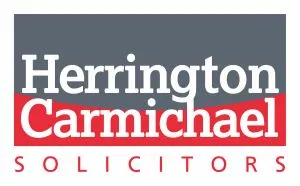When taking out a mortgage for a property purchase, a lending company will likely require a restriction to be placed on the property's register at the Land Registry for its security. Similarly, when an incorporated business takes on a loan, a lending company may require a charge (a form of security for a loan) to be filed at Companies House for its security.
Provided that the terms of the corresponding loan are complied with, it is unlikely that a charge of restriction will cause an issue for a borrower, and will simply be removed following the full discharge of the loan. But what if the parties simply forgot to remove the charge and the lending company has now been dissolved? And what if the lending company is dissolved before the loan has been fully repaid?
Simply keeping the charges and restrictions at Companies House and the Land Registry can cause further disruption for the borrower, which may prevent the property from being sold, or preventing further funding to be secured against the property . It is therefore advisable to remove the restrictions and charges removed.
What is dissolution?
As a brief comment on what happens to a lending company when it is dissolved, dissolution is the process by which a company is struck off the register at Companies House and then ceases to be a formal legal entity.
There are many ways and reasons for a lender to be dissolved, but it is easy to check whether this is the case for companies in the UK. Simply search the relevant company at the following link: https://find-and-update.company-information.service.gov.uk/
What does dissolution do to a lending company's assets?
If, at the point of the lending company's dissolution, there are any property or rights to which the lending company is entitled that have not been previously sold or transferred, these property and rights will essentially pass to the Crown.
There are various caveats and exclusions that apply to this concept, and also various procedural requirements that must be followed, but these are beyond the scope of this article.
Removing charge from Companies House
The process for removing a charge from Companies House where the lending company has been dissolved very much depends upon the status of the loan.
If, at the time of the lending company's dissolution, the loan has been repaid in full, then the borrower can simply instruct its solicitor to remove the charge on its behalf using appropriate evidence of the full repayment.
If, however, at the time of the lending company's dissolution, the loan has not been repaid in full, the situation is a little more complicated.
A borrower should not simply remove the charge unilaterally by instructing its solicitors. Doing so will not invalidate the charge and there is a risk that the Crown could pursue the borrower for any sums still due.
There are a number of solutions in this situation, which will vary on a case by case basis and therefore legal advice should be sought to determine which is appropriate. It may be as simple as obtaining confirmation from a contact at the now dissolved lender that a new lender has formally taken the former lender's place. Alternatively, the Crown will need to set out how to repay the remaining sums due.
Removing an entry on the Land Registry
As with removing a charge from Companies House, what procedure is required to remove an entry from the Land Registry where the lending company has been dissolved very much depends on the status of the loan.
If a borrower is confident that all sums have been paid and has evidence to this effect, the Land Registrar will have discretion to remove the entry following an application from the borrower's solicitors.
Alternatively, if there are still loan is still outstanding, formal applications to a court may be required. Legal advice should be sought as to what is the best way forwards.
The content of this article is intended to provide a general guide to the subject matter. Specialist advice should be sought about your specific circumstances.


